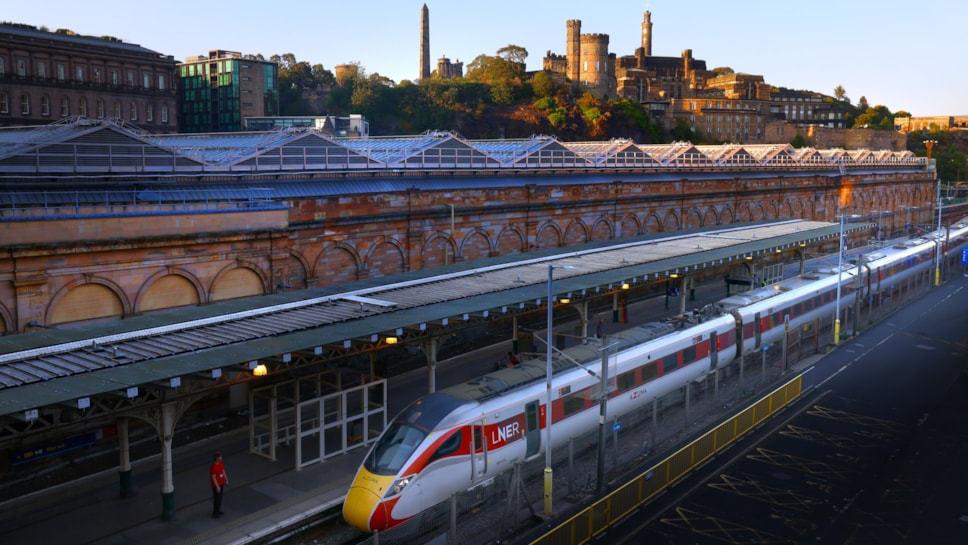
Times are Changing on the East Coast as LNER Gears Up for Timetable Transformation
More trains, more seats, quicker journeys, and even more great value fares are planned for customers from this December (2025) following the confirmation of a major new industry timetable for the East Coast Main Line.
In the biggest timetable transformation in more than a decade, departure times will be changing for services across the route. LNER will be introducing faster journey times between Edinburgh and London, cutting travel time between the two capitals to around four hours and ten minutes on many of the fastest services.
Following strong passenger growth in recent years, across the LNER route, the timetable will see nearly 10,000 new services per year and more than 60,000 extra seats each week*, meaning faster and more comfortable journeys and 21 per cent more LNER trains to and from London King’s Cross per weekday.
There will be more options for customers travelling between Edinburgh Waverley and London King’s Cross with five more weekday LNER services - 58 trains per weekday compared with 53 currently.
On average, travelling by LNER trains produces 14 times less carbon dioxide than flying and seven times less carbon dioxide than driving.** Coupled with increased public appetite to cut carbon emissions, LNER hopes quicker journey times between the two capitals will encourage even more people to choose to travel by rail.
LNER will operate four services from London King’s Cross to Aberdeen each weekday and four southbound services from the Granite City. These will call at additional stations in England, providing access to direct services to Aberdeen for more locations. The daily direct service between Inverness and London King’s Cross will also call at more destinations.
David Horne, Managing Director at LNER, said: “The new timetable will enable us to serve many destinations more frequently and guarantee thousands of extra seats each day where they are needed most, providing customers with more choice when it comes to greener and more sustainable journeys.
“Across our route, we have recruited hundreds of additional colleagues, from drivers to onboard crews and station teams, in readiness for the major change. As an industry, we’ve been preparing for many years, and we continue to work together to deliver the biggest timetable change in more than a decade for our customers and the communities we serve.”
The 60,000 extra seats per week the new timetable will deliver is enough to almost fill Murrayfield Stadium or fill Aberdeen’s Pittodrie Stadium three times over.
Independent research shows the new timetable will also bring significant benefits for the economy, generating at least an additional £15 million per year for the Scottish economy, on top of the £463 million annually that investment and spending on LNER services already delivers.
Liz McAreavey, Chief Executive at Edinburgh Chamber of Commerce, said: “This is a welcome announcement for Edinburgh and Scotland. Enhancing the already strong connectivity that Edinburgh enjoys between our two capitals and major economic centres will deliver faster, more frequent, and more sustainable rail services directly into the heart of our city. The new timetable offers greater choice for consumers, strengthens key connections for business, tourism, and investment, and supports good economic growth by creating new jobs and opportunities along the route.”
The December 2025 timetable has been developed through extensive collaboration with Network Rail, train operators and the Department for Transport, with experts using cutting-edge technology to work through numerous simulations of the timetable to help refine the plan.
The transformation is a result of £4 billion invested on the East Coast Main Line over the past decade across track and train and has been developed to meet the needs of the greatest number of customers.
This is the biggest timetable change in more than a decade, with the majority of new services starting in December. A small number of services will be introduced in a phased way between December and spring 2026. This phasing will help with the efficient introduction of the new timetable.
LNER will be holding a series of customer roadshows at a number of stations over the next few months to share further information about the changes.
Further details about the full December 2025 timetable, including station by station information, can be found here.
Notes to editors
* More than 60,000 extra seats across the route each week (Monday to Sunday inclusive) - this is versus today’s May 2025 timetable
** Carbon figures are based on the average CO2 emissions per passenger km for the LNER fleet in 2024-25, compared to the average CO2 emissions per passenger km from a domestic UK flight and from an average passenger car, taken from the Government's conversion factors: "Greenhouse gas reporting: conversion factors 2025"

